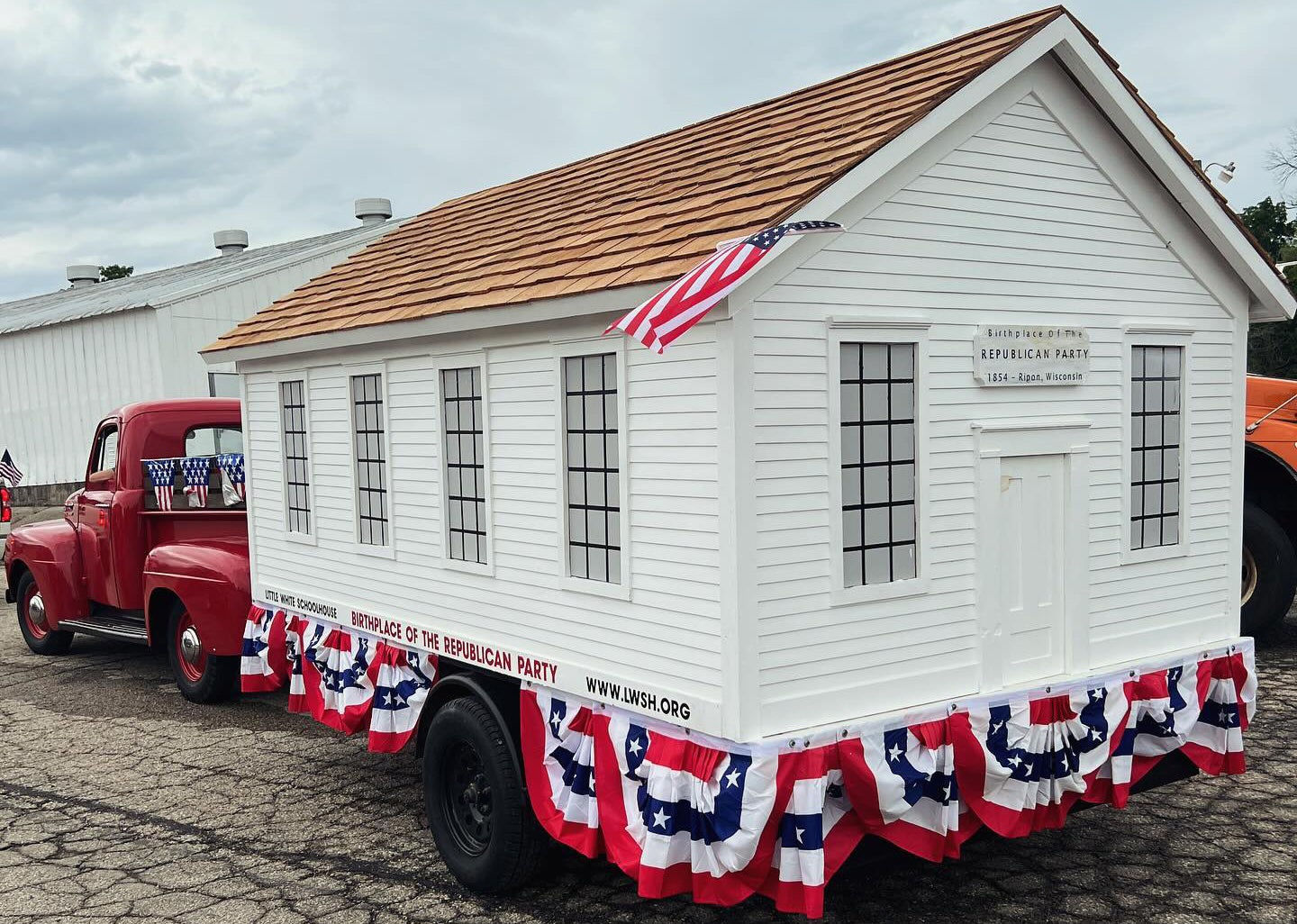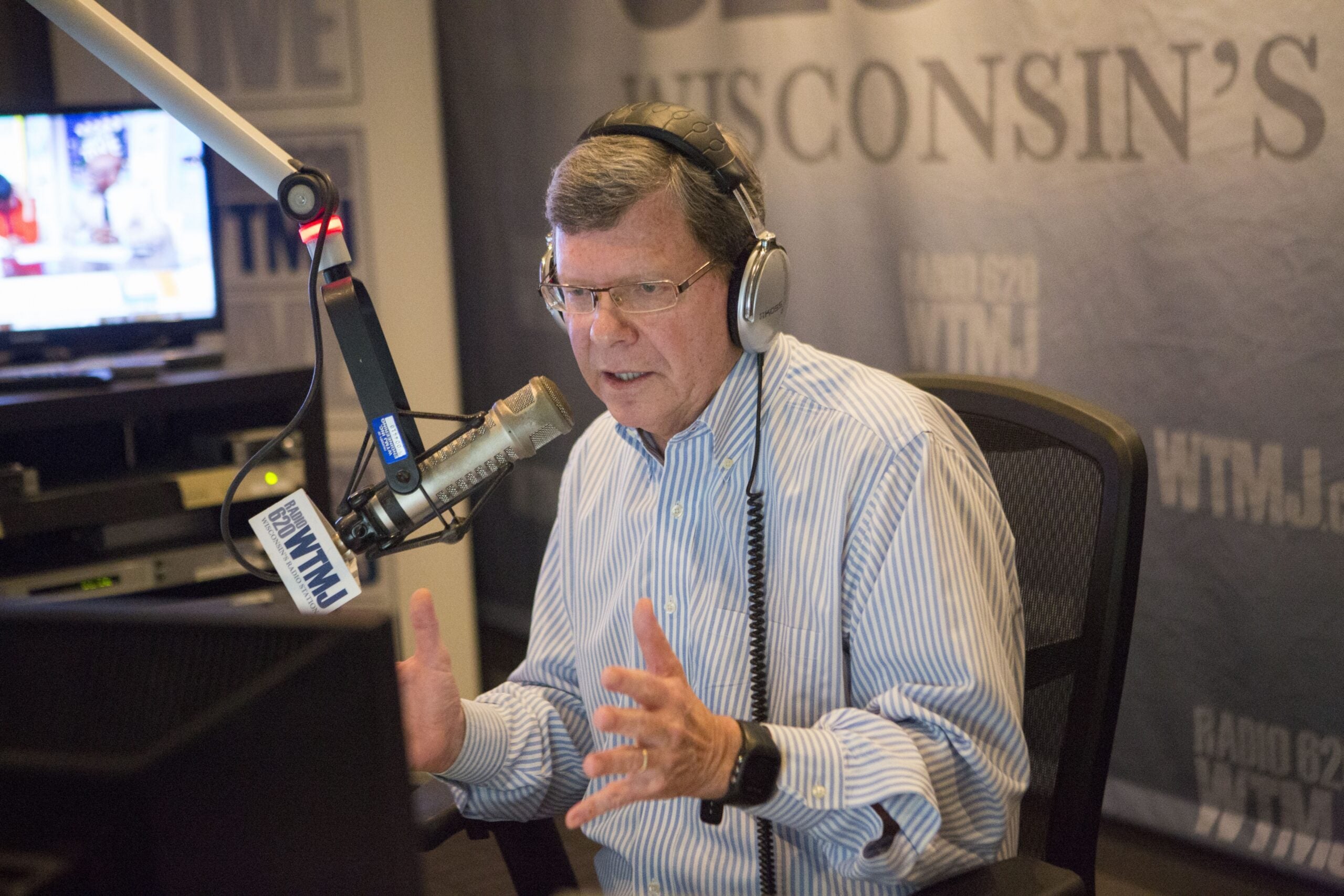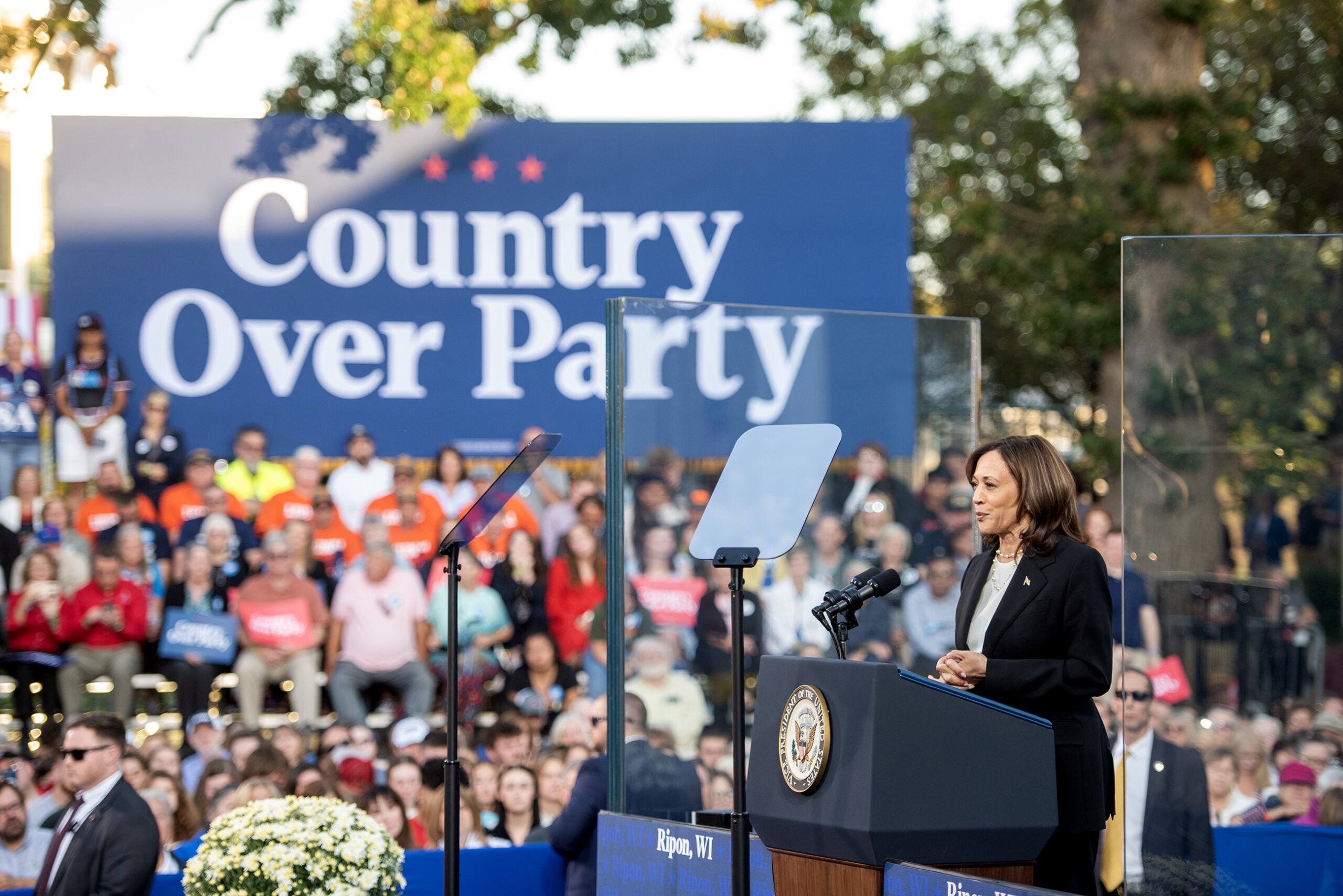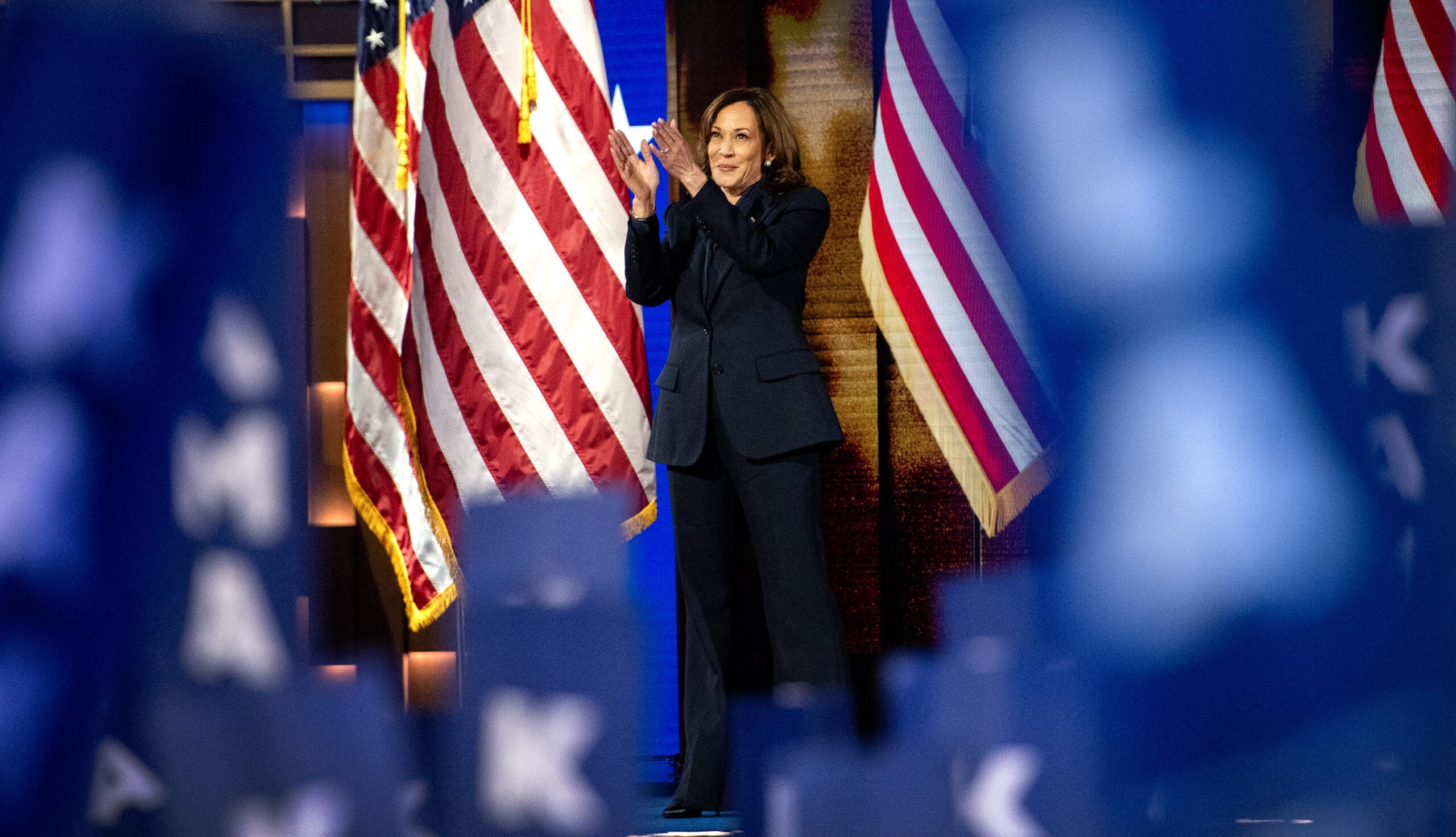A small Wisconsin town known as the birthplace of the Republican Party plans to lean into its history in the hope of attracting visitors during the Republican National Convention in Milwaukee this week.
The city of Ripon, about an hour and a half from Milwaukee, is home to the Little White Schoolhouse, a 171-year-old building that hosted a historic meeting in 1854 that led to the creation of the Republican Party. The schoolhouse has been maintained as a local museum, owned and operated by the Ripon Chamber of Commerce.
Representatives from the chamber will be in Milwaukee this week with a one-third scale replica of the schoolhouse, built by local high school students. The replica will be at the RNC’s “Convention Fest” vendor marketplace.
Stay informed on the latest news
Sign up for WPR’s email newsletter.
“We know that it’s going to be quite the eye-catching thing to have in the Convention Fest area and that a lot of people will want to come,” said Mandy Kimes, the chamber’s executive director. “Maybe they won’t be making the hour and a half trip, but they will come on over and talk to us about the history of the schoolhouse.”
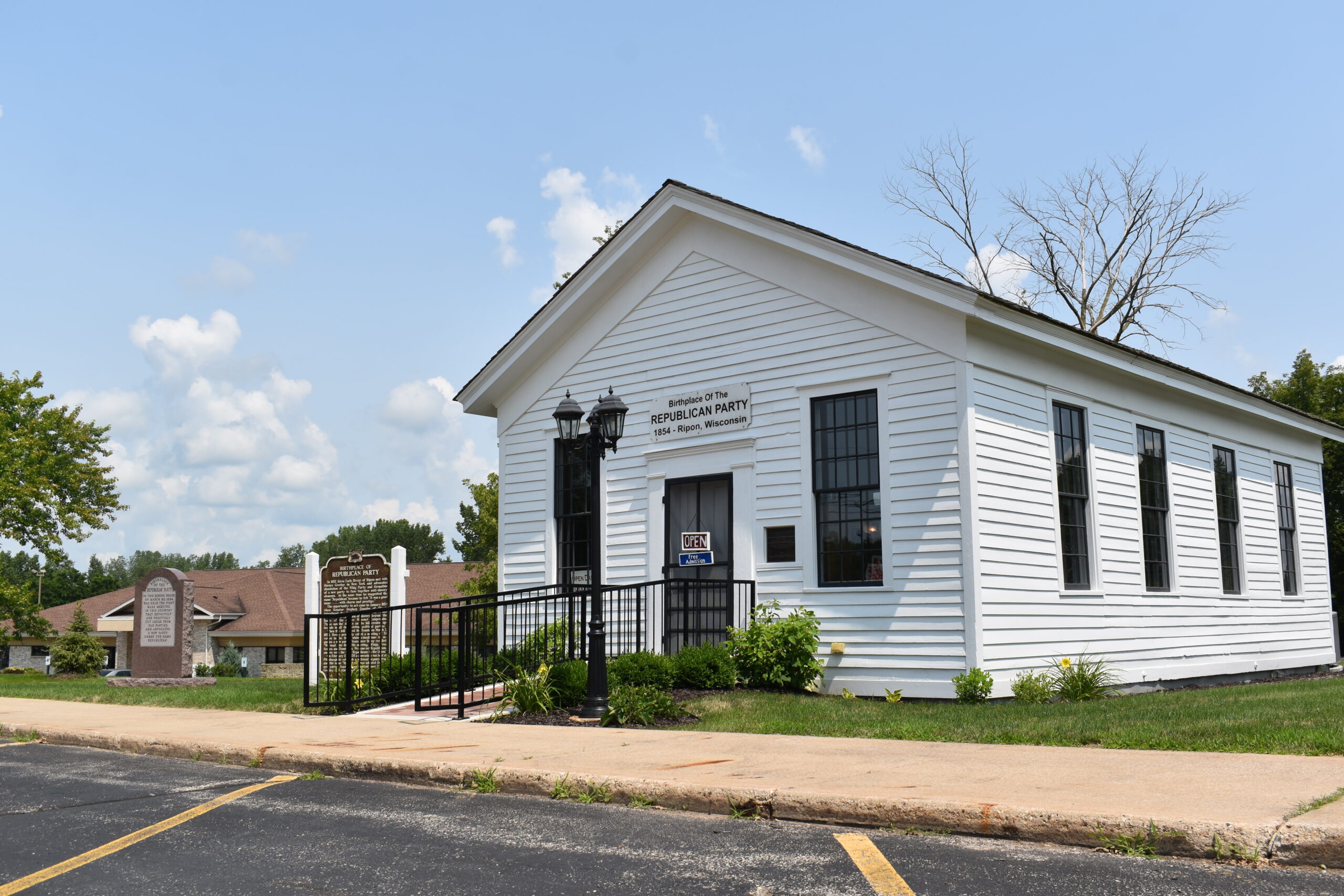
During the convention, the schoolhouse in Ripon will be open to visitors from 10 a.m. to 5 p.m. each day. The building moved to a new location last year, marking the sixth time it’s been relocated in its history.
While the move did face pushback from some local Republicans, Kimes said visitors so far this summer have been pleased with the location, along a commercial corridor that connects Ripon with the tourist town of Green Lake. She said the chamber is currently fundraising to convert a former bank on the property into a visitor center.
“We have room to grow and we have the visibility that’s really needed,” she said. “When people come in and they find out that it’s moved, and especially when they find out how many times it’s moved, … they really understand that this is the best strategic place for it to be in order to be a really viable and thriving museum for many years to come.”
The move forced the chamber to file new applications to the state and national registers of historic places.
The state relisted the building at its new location in May. Kimes said the chamber expects to find out this month whether its application to the U.S. Department of Interior, which manages the national register, is successful.
What was Ripon’s role in the birth of the GOP?
The community’s ties to the early GOP can be traced back to Alvan Bovay, a New York state native and prominent figure in the now defunct Whig Party, who moved to what is now Ripon to practice law in 1850. That’s according to David Sakrison, president of the Ripon Historical Society board of directors and retired Ripon College business management instructor.
At the time, the Whigs were deeply divided over slavery, frustrating Bovay and like-minded abolitionists, Sakrison said. In 1854, the Kansas-Nebraska Act was introduced in Congress, creating the Kansas and Nebraska territories and allowing settlers of to decide whether to allow slavery.
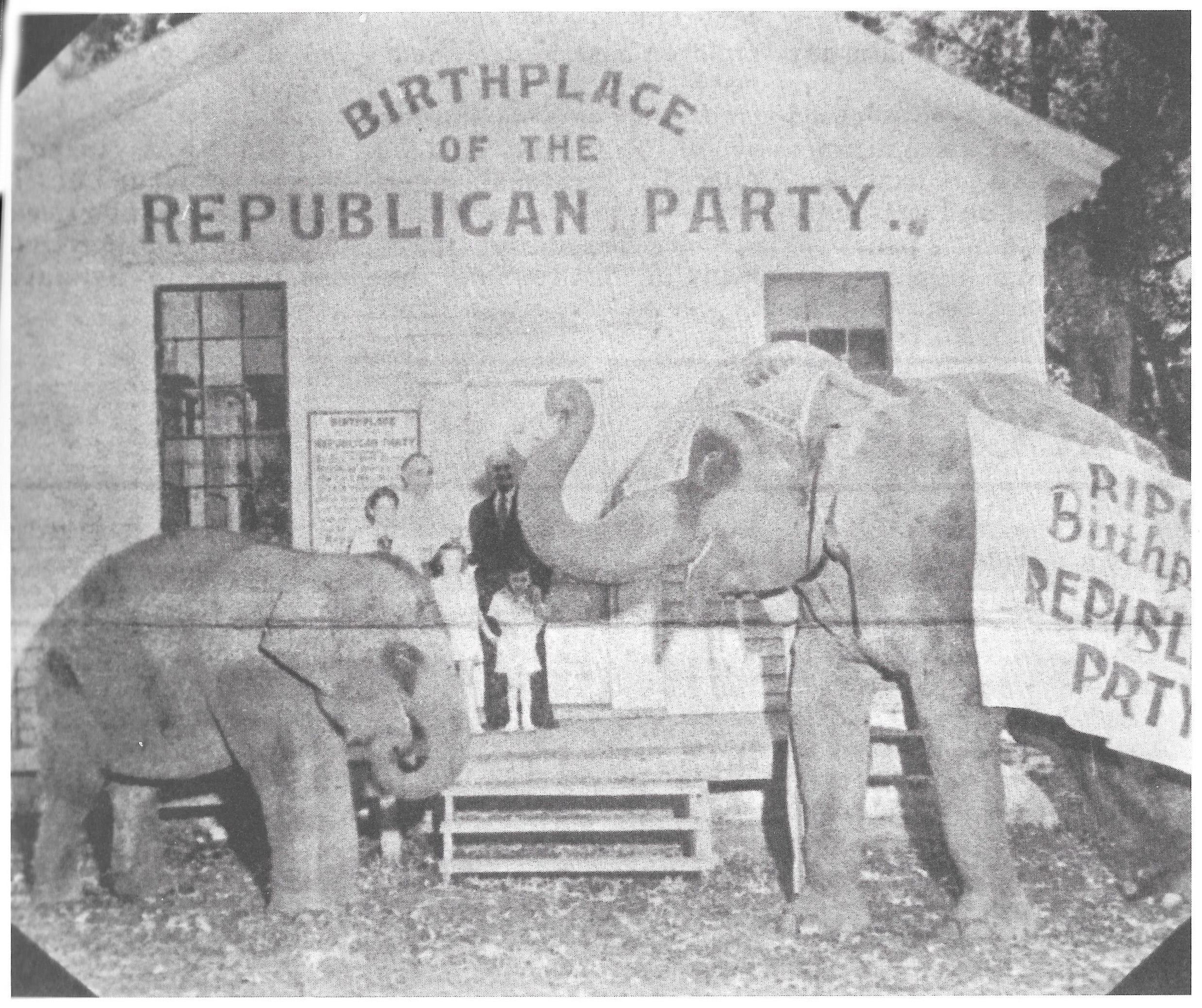
As the bill was being debated in Congress that February, Bovay and abolitionists met in Ripon to pass a resolution pledging to unite around repealing the bill if it became law, Sakrison said. The resolution was then published in a New York newspaper.
After the bill passed the Senate in March 1854, Bovay and abolitionist allies from several political parties met in a one-room schoolhouse in Ripon to discuss next steps. Bovay told those gathered that they needed to dissolve the Whig party and create a new party focused on stopping the expansion of slavery, suggesting the party’s name be “Republican,” Sakrison said.
Following that meeting, Bovay wrote to a New York newspaper ally, who published an article calling for the new party, using the Republican name, according to Sarkinson.
The first state Republican Party convention was held in Michigan in July 1854, and the Republican National Committee held its first national convention in 1856, he said. Abraham Lincoln became the party’s presidential nominee four years later.
“More than a dozen places have claimed to be the real birthplace of the Republican Party, but the party’s official history, published in 1904, called Ripon, Wisconsin, ‘the birthplace of the Grand Old Party,’” Sarkinson said. “To quote Alvan Bovay again, ‘We went into the little meeting held in a school house Whigs, Free-soilers and Democrats. We came out of it Republicans.’”
Sakrison said the Little White Schoolhouse has been a point of pride for the community for generations, serving as a reminder that “this little town has had some serious national significance.”
But he also said the Republican Party of today is much different than the party that fought slavery.
“If the Republican Party of 1860 were around today, modern Republicans would consider them radical leftists,” he said. “This is not the party of Abraham Lincoln.”
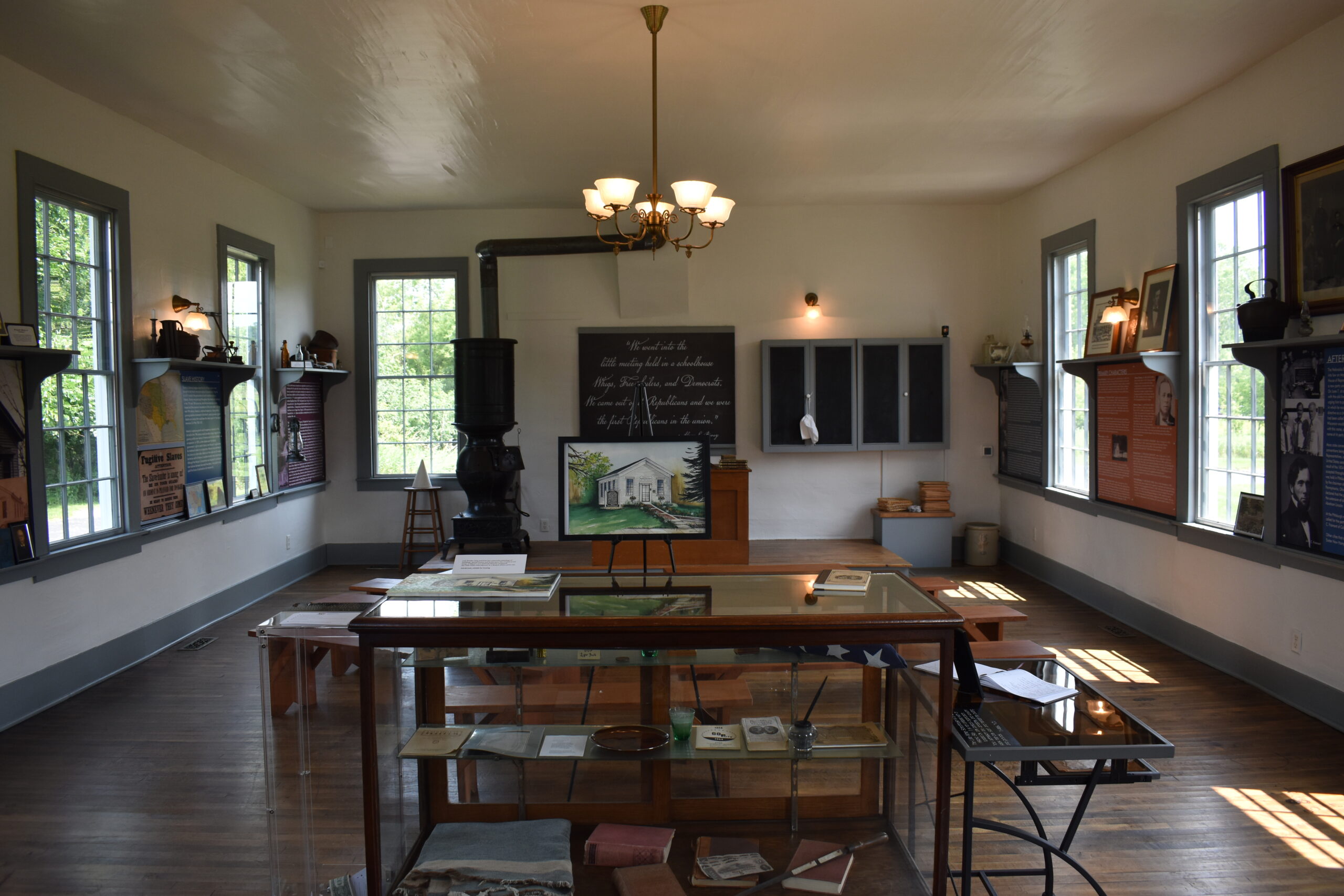
Wisconsin Public Radio, © Copyright 2025, Board of Regents of the University of Wisconsin System and Wisconsin Educational Communications Board.
